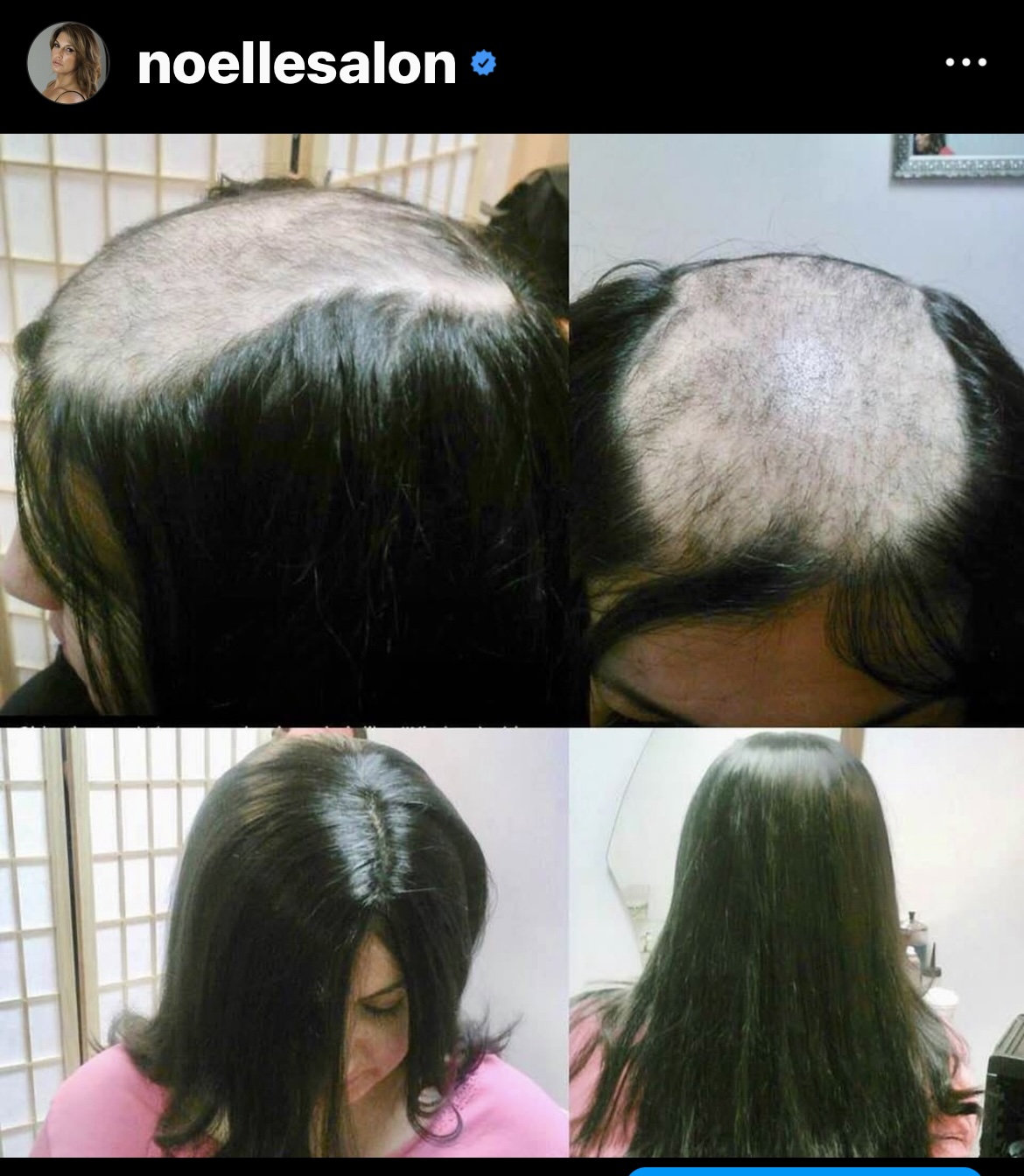Decoding Female Pattern Baldness in 20s: Unveil the Truth
·
The Truth About Female Pattern Baldness in 20s
Hair loss is usually associated with aging or male pattern baldness, but in recent years, there has been a concerning trend of young women experiencing hair thinning and baldness in their 20s. Female pattern hair loss in the 20s, also known as female baldness in the 20s, is a silent epidemic that is affecting more and more young women. It can have a significant impact on their self-esteem and overall well-being. In this blog, we will investigate the rising trend of female baldness in the 20s, delve into the causes and possible treatments, and explore prevention strategies that can help young women maintain healthy hair growth.
Investigating the Rising Trend: Female Pattern Hair Loss in 20s
In recent years, an increasing number of young women in their 20s have experienced hair thinning and baldness, a condition commonly known as female baldness in their 20s. while hair loss is often associated with aging, it is disheartening to see young women struggling with this issue at such a young age. The emotional stress and psychological impact of hair loss in the 20s cannot be underestimated, as it can affect self-confidence and overall well-being.
The Silent Epidemic: Female Pattern Baldness in 20s
One of the major causes of female baldness in the 20s is female pattern hair loss, which is also known as the most common cause of hair loss or female pattern baldness. This condition typically follows a specific pattern of hair loss, characterized by thinning hair on the crown of the head, widening of the part, and receding hairline. What makes female pattern hair loss in 20s particularly challenging is that it is often not as noticeable as male pattern baldness, as women tend to experience hair thinning rather than complete baldness. This can be frustrating and distressing for young women, as they may struggle to understand the cause of their hair loss and find a suitable treatment.
Female pattern hair loss in the 20s is thought to be influenced by hormonal changes, particularly estrogen levels, genetics, and aging. While genetic predisposition plays a significant role in female baldness in the 20s, hormonal changes, particularly fluctuations in androgen levels, can trigger hair thinning and loss. Androgens are male sex hormones that are also present in women, and an imbalance in these hormones can affect hair follicle growth and impact normal sexual development, leading to hair loss.

Genetics: Androgenic or Androgenetic Alopecia
Genetics and hereditary factors play a crucial role in female baldness in the 20s. Androgenetic alopecia, also known as pattern hair loss, is the most common type of hair loss in both men and women. It is caused by a combination of genetic and hormonal factors.
Having a family history of hair loss, particularly on the mother's side, increases the likelihood of developing androgenetic alopecia in young women, emphasizing the potential degree of hair loss. The inheritance pattern of female baldness in the 20s is complex, involving both genetic and hormonal factors. It is believed that certain genes inherited from both parents contribute to the sensitivity of hair follicles to the effects of androgens, resulting in hair thinning and loss.
Recognizing the role of genetics in female baldness in the 20s is essential for understanding the underlying causes and finding appropriate treatment options. While hair loss can be distressing, it is important to remember that it is not a reflection of personal shortcomings or lack of care. Various factors are at play, and genetics is just one piece of the puzzle.
Unraveling the Causes of Female Baldness in the 20s
While female pattern hair loss and genetics are key factors in female baldness in the 20s, there are other causes and contributing factors that need to be explored. Understanding these causes can help young women identify the potential triggers and take steps toward preventing and managing hair loss.
Impact of Extreme Dieting and Poor Nutrition
Extreme dieting and poor nutrition are common causes of hair thinning and loss in young women. When the body is not receiving adequate nutrients, it prioritizes essential physiological functions over hair growth, leading to hair follicles entering a resting phase. This can result in hair shedding and noticeable hair loss.
- Extreme dieting, often aimed at rapid weight loss, deprives the body of essential nutrients and can cause hair loss.
- Nutritional deficiencies, such as lack of iron, vitamin D, and biotin, can negatively impact hair growth and lead to hair thinning.
- Crash diets and restrictive eating patterns can disrupt the normal hair growth cycle and cause excessive shedding.
- Inadequate intake of protein, which is essential for hair growth, can also contribute to hair loss in young women.
- Maintaining a balanced diet with a variety of nutrients is crucial for maintaining healthy hair growth and preventing hair loss.
How Stress Influences Hair Loss
High levels of stress can trigger hair shedding and lead to temporary hair loss in young women. The hair growth cycle consists of three phases: anagen (growth phase), catagen (transitional phase), and telogen (resting phase). Excessive stress can disrupt this cycle, pushing hair follicles into the telogen phase prematurely, which results in hair shedding and thinning, often alternating with periods of stability in hair density.
- Stress-induced hair loss, also known as telogen effluvium, is a common type of hair loss in young women.
- Psychological stress, such as anxiety, depression, and trauma, can contribute to hair shedding and noticeable hair loss.
- Physical stress, such as illness, surgery, or significant weight loss, can also trigger telogen effluvium and hair loss.
- Managing stress through relaxation techniques, exercise, and seeking support can help reduce hair shedding and promote healthy hair growth in young women.
- It is important to note that telogen effluvium is usually temporary and hair regrowth can occur once the underlying stressor is addressed.
Hormonal Changes: A Key Factor
Hormonal changes, such as those caused by birth control or hormonal imbalances, can play a significant role in female baldness in the 20s. Fluctuations in hormone levels can impact the hair growth cycle and lead to hair thinning and loss in young women.
- Birth control pills, particularly those containing androgens, can affect hair growth and contribute to hair thinning in some women.
- Hormonal imbalances, such as polycystic ovary syndrome (PCOS) or thyroid disorders, can cause hair loss in young women.
- Understanding and managing hormonal changes, through medical intervention or lifestyle changes, can help prevent and manage hair loss in the 20s.
- Young women need to consult with a healthcare professional to determine the underlying cause of hair loss and explore appropriate treatment options.
Autoimmune Disease or Thyroid Disorders: A Hidden Cause
Autoimmune diseases and thyroid disorders are often overlooked causes of hair loss in young women. These conditions can disrupt the hair growth cycle and cause hair thinning and baldness.
Autoimmune diseases, such as alopecia areata, can result in sudden hair loss, including bald spots and complete hair loss (alopecia totalis).
Thyroid disorders, including hypothyroidism and hyperthyroidism, can cause changes in hair texture and lead to hair thinning and loss.
- Identifying and treating underlying autoimmune diseases and thyroid disorders is crucial for preventing and managing hair loss in young women.
- Regular blood tests and medical evaluation can help diagnose these conditions, allowing for appropriate treatment and management of hair loss.
Lifestyle and Environmental Factors Contributing to Hair Loss
In addition to genetics and hormonal factors, certain lifestyle and environmental factors can contribute to hair loss in young women. Understanding the impact of these factors can help young women make informed choices and take preventive measures to maintain healthy hair growth.
The Effect of Smoking on Hair Health
Smoking is known to have detrimental effects on overall health, and it can also negatively impact hair health and contribute to hair thinning in young women. The toxins in cigarettes can reduce blood flow to the hair follicles, resulting in hair loss and slower hair regrowth.
- Smoking restricts blood vessels, reducing the flow of nutrients and oxygen to hair follicles, leading to hair thinning and loss.
- The harmful chemicals in cigarettes can weaken hair follicles and make them more susceptible to damage and hair loss.
- Quitting smoking and avoiding exposure to secondhand smoke can help improve hair health and reduce the risk of hair loss in young women.
Hairstyling Practices: A Potential Culprit
Certain overly tight and damaging hairstyling practices can contribute to hair shedding and hair thinning in young women. The constant tension and stress on hair follicles can result in a type of hair loss called traction alopecia.
- Tight hairstyles, such as braids, buns, and ponytails, can cause hair follicle inflammation and lead to hair shedding and thinning.
Excessive use of heat-styling tools, such as flat irons and curling irons, can weaken hair strands and cause breakage.
- Rough brushing, backcombing, and excessive hair manipulation can damage the hair shaft and contribute to hair loss.
Wearing hair accessories, such as headbands and hair extensions, that pull on the hair can lead to traction alopecia and hair loss.
Understanding Other Types of Hair Loss
While female pattern hair loss is the most common cause of female baldness in the 20s, there are other types of hair loss that young women may experience. Understanding these types of hair loss is important for a comprehensive approach to prevention and treatment.
Traction Alopecia: A Result of Styling?
Traction alopecia is a form of hair loss caused by excessive tension and pulling on the hair follicles. Young women who frequently wear tight hairstyles, such as braids, buns, and extensions, are at a higher risk of developing traction alopecia.
- Traction alopecia is a gradual form of hair loss that occurs due to prolonged tension on the hair follicles.
- Certain hairstyles, hair accessories, and hair care practices can contribute to traction alopecia in young women.
- Recognizing the signs of traction alopecia, such as receding hairline and hair thinning along the hairline, can prompt changes in hairstyling habits and prevent further hair loss.
- Avoiding tight hairstyles and opting for looser, gentler hair care practices can help prevent and manage traction alopecia in young women.
Alopecia Totalis and Alopecia Areata: Beyond Pattern Baldness
While female pattern hair loss is the most common type of hair loss in young women, other forms of hair loss, such as alopecia totalis and alopecia areata, are less common but still impactful.
- Alopecia totalis is a type of alopecia areata that causes complete hair loss on the scalp, including eyebrows and eyelashes.
- Alopecia areata is an autoimmune disease in which the body's immune system mistakenly attacks hair follicles, resulting in patchy hair loss.
- Understanding these types of hair loss expands the scope of treatment options and highlights the need for individualized approaches to hair loss in young women.
- Consulting with a dermatologist and exploring appropriate treatment options, such as topical solutions or steroid injections, can help manage and potentially regrow hair in cases of alopecia totalis and alopecia areata.
Effective Treatments for Female Baldness in 20s
While female baldness in the 20s can be distressing, the good news is that there are effective treatment options available. From non-invasive therapies to medical interventions, young women have a range of choices when it comes to combating hair loss and promoting hair regrowth.
Low-Level Laser Therapy: A Non-Invasive Treatment
Low-level laser therapy, also known as red light therapy, is a non-invasive treatment that has shown promise in promoting hair regrowth in young women with hair thinning and baldness.
- Low-level laser therapy uses red or near-infrared light to stimulate hair follicles and promote hair growth.
- This treatment is believed to increase blood flow and nutrient delivery to hair follicles, revitalizing them and promoting healthy hair growth.
- Low-level laser therapy can be performed in a clinic or at home using handheld devices, making it a convenient and accessible treatment option for young women.
- Regular and consistent use of low-level laser therapy has shown positive results in hair regrowth and improving the density and thickness of hair in young women with female baldness in their 20s.
Medications: Solving the Root Cause
Medications can be an effective way to address the underlying causes of female baldness in the 20s, particularly in cases of androgenetic alopecia and hormonal imbalances.
- Medications such as minoxidil and finasteride are FDA-approved for the treatment of hair loss in both men and women.
- Minoxidil, available in topical form, helps promote hair regrowth by prolonging the growth phase of the hair follicle and increasing blood flow to the scalp.
- Finasteride, an oral medication, works by inhibiting the production of a hormone called dihydrotestosterone (DHT), which is responsible for hair follicle miniaturization in androgenetic alopecia.
- Medications for hair loss should be prescribed and monitored by a healthcare professional, as they may have side effects and require ongoing evaluation and adjustment.
Prevention Strategies
Preventive measures for hair loss include maintaining a balanced diet, reducing stress levels, practicing gentle hair care, and addressing any underlying medical conditions. A balanced diet rich in essential nutrients, including fatty acids like omega-3 and omega-6, as well as iron and protein, is crucial for healthy hair growth. Stress reduction through holistic approaches such as yoga and meditation can positively impact hair health. Additionally, gentle hair care practices and avoiding harsh styling can prevent damage and hair loss. Addressing any underlying medical conditions through proper diagnosis and treatment is also essential for preventing further hair loss.
Balanced Diet: The First Line of Defense
Embracing a well-rounded nutritional intake forms the cornerstone for stimulating robust hair growth and minimizing hair fall. It symbolizes an affirmative and proactive stance towards nurturing hair well-being and resurgence. Implementing a balanced diet brings forth a ray of hope and assurance in bolstering the vitality of hair follicles. It signifies a forward-looking and constructive measure in averting and coping with hair loss, instilling a profound sense of empowerment and positivity in individuals.
Reducing Stress: Holistic Approach
In the quest to combat female hair loss, especially in younger women, embracing holistic stress management approaches like meditation and yoga can yield positive results. A well-balanced diet and regular exercise routine contribute not only to overall wellness but also play a crucial role in reducing stress levels. Seeking professional help for stress management, such as therapy or counseling, is beneficial. Additionally, in certain cases, medical intervention may be necessary to effectively treat female hair loss.
Gentle Hair Care: Avoiding Harsh Styling Practices
Avoiding tight hairstyles like braids and ponytails is essential to prevent tension and breakage. Incorporating heat-protectant sprays and minimizing heat styling can help maintain hair health. Opt for gentle shampoo and conditioner free of harsh chemicals to nurture your locks. When detangling wet hair, use a wide-toothed comb to avoid pulling or yanking on strands. Consulting with a dermatologist for personalized hair care advice or considering hair supplements can further promote healthy hair growth.
Hair Toppers and Hair Systems
Scalp prostheses are attached safely, without shaving or gluing, to cover hair loss areas, and restore the look of your natural hair! A beaded-matrix system of attachment ensures that the hair topper or hair system stays securely in place, allowing for a seamless blend with your existing hair. Hair toppers and systems come in a variety of colors, lengths, and styles, offering a customizable solution for those experiencing female pattern baldness in their 20s. Hair transplant or hair transplantation is one of many ways to find solutions, but while finding ways to address female pattern baldness is important, it is equally crucial to embrace self-acceptance and cultivate confidence from within. Remember that beauty comes in many forms, and baldness does not define your worth or attractiveness.

Medical Conditions
There's good news for young people experiencing noticeable hair loss: addressing underlying medical conditions, such as iron deficiency, can make a significant difference in minimizing future hair loss. Hormonal imbalances or nutritional deficiencies often play a role in female pattern hair loss. Consulting with a healthcare professional and conducting blood tests can help identify the root cause. Treatment may involve medication, dietary changes, or other lifestyle adjustments. Additionally, considering hair loss treatments alongside addressing the underlying medical condition can lead to positive results, potentially promoting hair regrowth and improving overall hair health.
Can Hair Grow Back with Proper Care?
Proper care is crucial for improving hair and scalp health. While some hair loss conditions can be reversed with proper care, others may require medical treatment. Promote hair growth by maintaining a healthy diet, exercising regularly, and reducing stress. For personalized advice, consult a dermatologist.
Is Female Baldness in 20s a Reflection of Our Lifestyle Choices?
Lifestyle choices can contribute to female baldness in the 20s, along with genetics and hormonal changes. Factors such as poor nutrition, stress, and certain hairstyles may play a role. Maintaining a healthy diet, reducing stress, and avoiding tight hairstyles can help prevent hair loss. Consulting with a healthcare professional or dermatologist is advised for diagnosis and treatment options.
Conclusion
In conclusion, female baldness in the 20s is a rising trend that cannot be ignored. It is essential to understand the various factors contributing to this silent epidemic, including genetics, extreme dieting, stress, hormonal changes, autoimmune diseases, and lifestyle choices. However, there is hope. Effective treatments such as low-level laser therapy, platelet-rich plasma therapy, and medications can help combat hair loss and stimulate regrowth. Prevention strategies, such as maintaining a balanced diet, reducing stress, and adopting gentle hair care practices, can also play a significant role in preserving hair health. Individuals must address underlying medical conditions and take proactive steps to care for their hair. With proper care and attention, it is possible for hair to grow back and for individuals to regain their confidence. Let's prioritize our hair health and make informed choices to promote vibrant and healthy locks.












